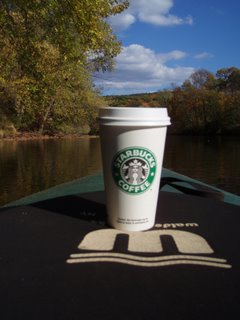
The deciduous trees are almost clear of leaves, now. The pin oaks seem to want to hang on to their annual proliferation the longest and the golden hue that has developed as a result lights the cliffside of Talcott ridge when it is bathed in afternoon sun. But it is inevitable, winter is in the wings and already one blast of the chilly Northwind has made its presence felt as far south as Connecticut. The sky seems lower with the more acute solar angle and the clouds, big, billowy, cumulonimbus affairs, race each other from overhead to the horizon in the South.
With the loss of cover, the entire landscape is bigger and more revealed. The cloak of green is gone and gone with it is the cover which held in a different sound – a contained forest echo below the thick canopy of summer. Now the only green is that held aloft by the pines, spruces, and hemlocks which offer verdant patches among the gray spiderweb of bare beech, maple, and oak branches. The forest sounds are more diffuse, each with origins more challenging to locate. All is set for the first snowfall of the season.
Frost has touched the area two or three times already and the movement of water and biota in the soil has slowed – anticipation of the months-long lock that seals the upper two feet of ecosystem floor in this region. The evergreens are in their full splendor. The glory of fall color from the deciduous trees is, indeed, unmatched but fleeting. The white pines, in particular, become the seasonal focal point of hope, life, renewal, and perseverance. The darkness and bitter cold of January and February will test the will of all creatures that venture for even minutes in the full exposure of biting, frosty air.
My paddling is stronger and more defined with the month of daily work. The changing air has made it important to move with a brisk tempo and to capture the heat of muscular contraction for comfort. I’m more cautious with my movements in an effort to avoid getting the cold water on my hands which would lead to a stiffness that interferes with the arm, hand, paddle shaft, blade, water connection.

This connection is, to a seasoned paddler, a vital element in efficient and enjoyable movement through water in any conditions. The closer the connection of the body to the water, the less the mind has to be a part of the equation, freeing it for the aesthetic pleasures that the wanderings of kayak or canoe bring. In the same way that the leaves can change the forest aura, affecting the traveler in so many different and interesting ways during a passage on foot along the dirt trail, the water is ever changing in character as well. Even the scents that rise up from the disturbed surface are as distinct as the month during which a river wanderer chooses to ply the watery course. The more time that I spend on the river, paddling the same stretch, the closer I engage with the subtle details. The banks have become very familiar to me as I look at how recognizable features – fallen trees, small tributaries, human disturbances – all appear to change with the shift in light, the rise and fall of the river, and the cooling atmosphere. I spend more time focusing on the minutae, such as the details of odor, with this increase in familiarity that the river and I have created.

I am excited for the first paddle in snow and anticipate with eagerness the sound of the flakes upon the cold river surface. In the time between now and that particular morning, afternoon, or evening, I continue to explore this American gem with an ever-deepening appreciation.
Author’s note: My digital camera took a particularly long plunge in the rapids and is currently not functioning. My hope is that it will continue to dry with minimal depositing on the circuit boards so that it will be functional again, soon. In the meantime, I will have to rely on photos that I have archived but not yet used to illustrate this journal.
 This is the corn field across the street from our house. It has not been farmed for a few years, but it is normally 'high and dry' in all but the heaviest flooding.
This is the corn field across the street from our house. It has not been farmed for a few years, but it is normally 'high and dry' in all but the heaviest flooding.



























